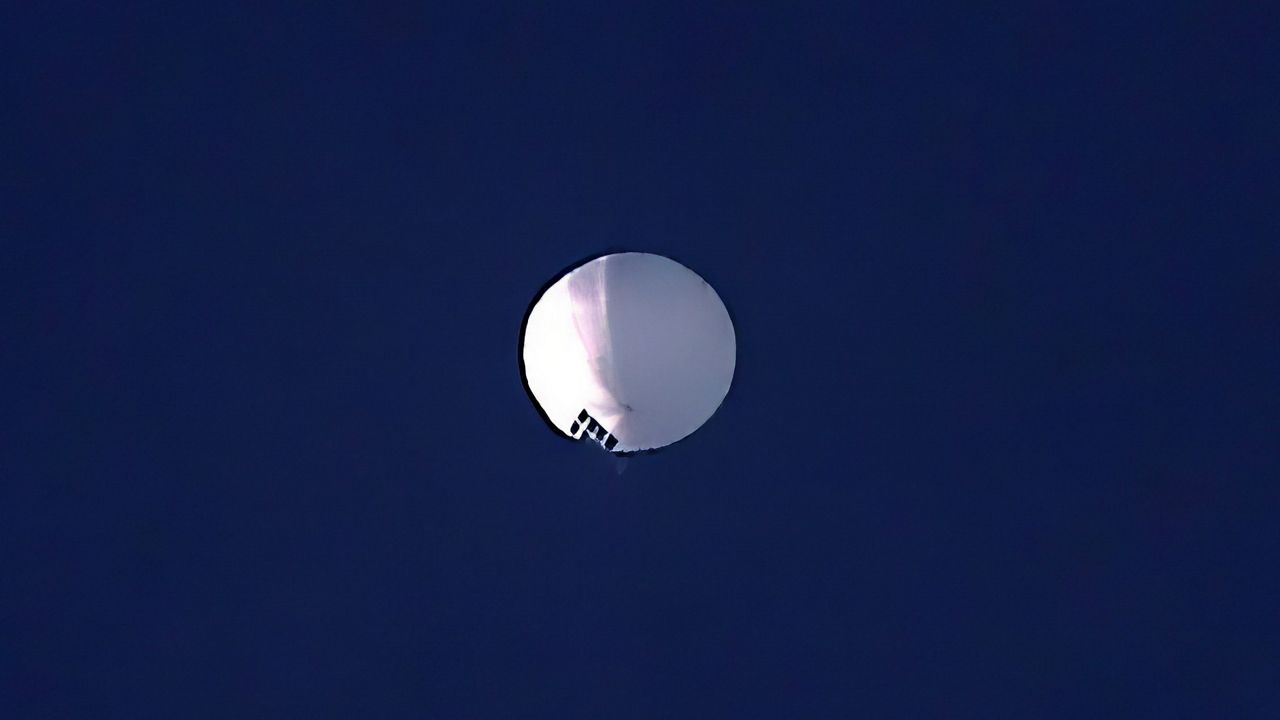A bill introduced in the U.S. Senate on Wednesday would require high-altitude balloons to be equipped with tracking systems so the U.S. military can quickly identify them.
What You Need To Know
- A bill introduced in the U.S. Senate on Wednesday would require high-altitude balloons to be equipped with tracking systems so the U.S. military can quickly identify them
- The bipartisan legislation by Sens. Mark Kelly, D-Ariz., and Ted Budd, R-N.C., is in response to U.S. fighter jets shooting down four objects last month, including a suspected Chinese spy balloon
- The bill also would require the FAA to work with the International Civil Aviation Organization to develop equivalent standards for high-altitude balloons launched in other countries and direct the FAA to establish a rulemaking committee for updating FAA tracking regulations
- Pat Cannon, president of the Balloon Federation of America, said he believes the legislation should be rewritten to exclude manned balloons
The bipartisan legislation by Sens. Mark Kelly, D-Ariz., and Ted Budd, R-N.C., is in response to U.S. fighter jets shooting down four objects last month, including a suspected Chinese spy balloon.
“At a time when our adversaries are using hostile surveillance tactics, there is no reason why our country should have to wonder whether an object in our airspace is a threat, weather balloon, or science project,” Kelly said in a statement. “Our common-sense legislation will give our military the tools needed to identify threats more quickly and efficiently, while providing more certainty to good faith operators of high-altitude balloons.”
The Seeing Objects at Altitude Regularly, or SOAR, Act would require the Federal Aviation Administration to set new regulations that would require all balloons flying 10,000 feet above sea level to be equipped with tracking systems that would transmit their altitude, identity and location.
The bill also would require the FAA to work with the International Civil Aviation Organization to develop equivalent standards for high-altitude balloons launched in other countries and direct the FAA to establish a rulemaking committee – comprised of government officials and industry and aviation safety experts – that would issue recommendations on how to best update FAA regulations to track high-altitude balloons.
“The recent shootdown of a Chinese spy balloon that traversed the skies over our country for more than a week highlights the immediate need for the FAA to re-evaluate how we track objects flying over American airspace,” Budd said in a statement. “Examining more efficient means for tracking the identity and location of aircraft is not only critical to maintaining safety in our skies, but it’s also a matter of national security.”
Pat Cannon, president of the Balloon Federation of America, said he believes the legislation should be rewritten to exclude manned balloons, which typically don’t have electrical systems and therefore are incapable of carrying equipment to help identify them.
He also said he doesn’t understand the need for such a requirement on manned balloons because they don’t fly in Class A airspace, which is above 18,000 feet. The four objects shot down last month were flying at 20,000 to 60,000 feet.
“If they just throw a whitewash over the top of this thing and say ‘all balloons’ and they don't distinguish between man and unmanned, that's not right, and we would oppose that,” Cannon told Spectrum News.
The bill defines a high-altitude balloon as “a manned or unmanned free balloon operating not less than 10,000 feet above sea level.”
If the legislation were amended to exclude manned balloons, the Balloon Federation of America would support it, Cannon said, “because I think that we should have the right to identify what is up there above us.”
A U.S. fighter jet shot down the suspected Chinese spy balloon Feb. 4 off the coast of South Carolina. The balloon had traveled over Alaska, Montana, the nation’s heartland and the Carolinas before being fired upon.
About a week later, three other objects were shot down in the span of three days – one on Alaska’s northern coast, one in the Yukon in Canada and the other above Lake Huron, near Michigan. The U.S. has not identified those three objects and has called off the search to retrieve them.
The White House has said the North American Aerospace Defense Command’s decision to broaden the parameters of its radar surveillance may explain the increased frequency of such sightings.



